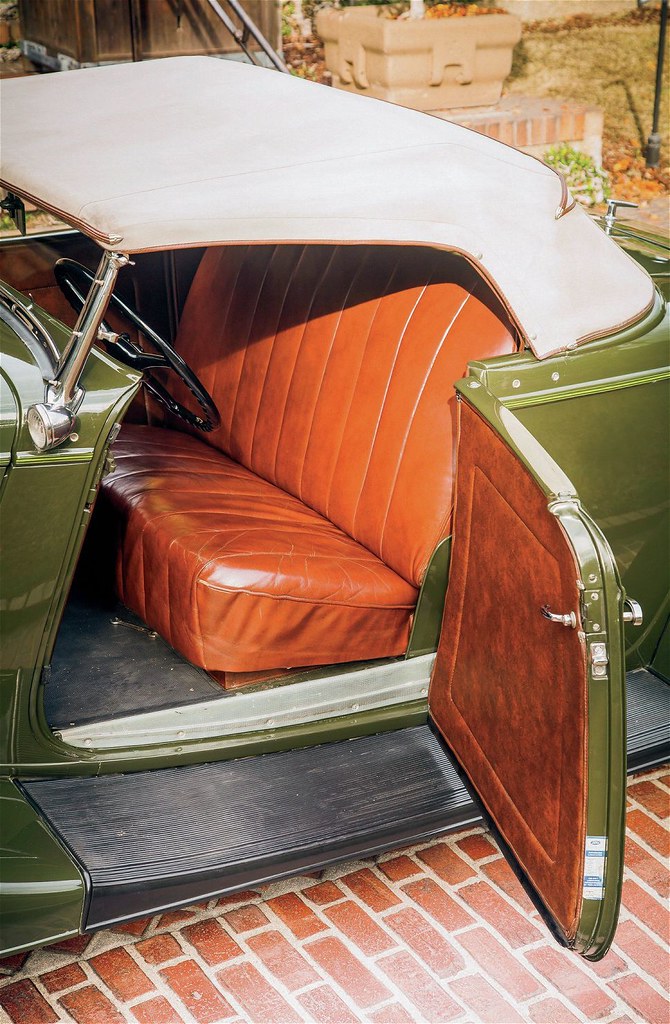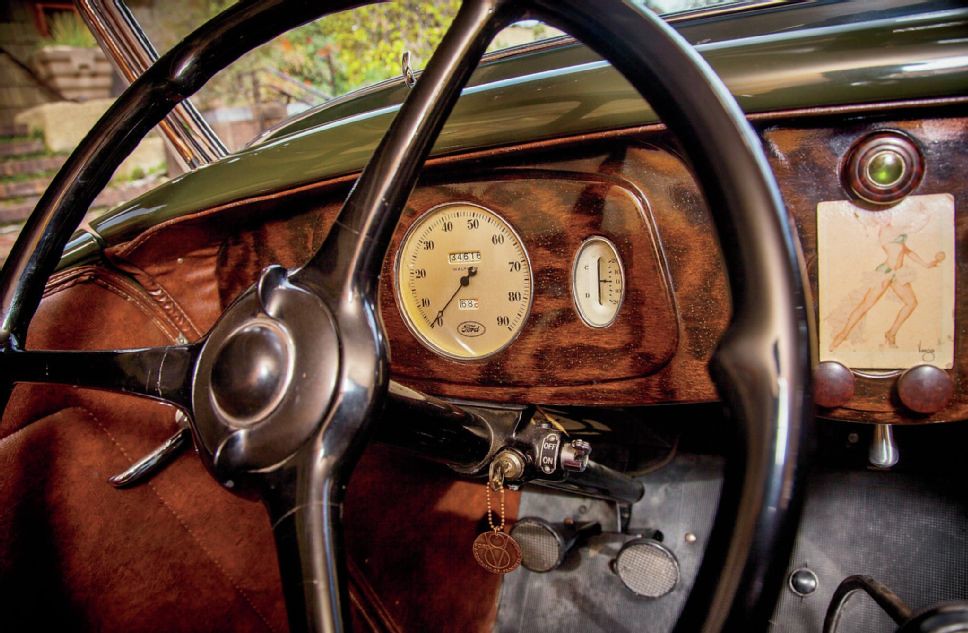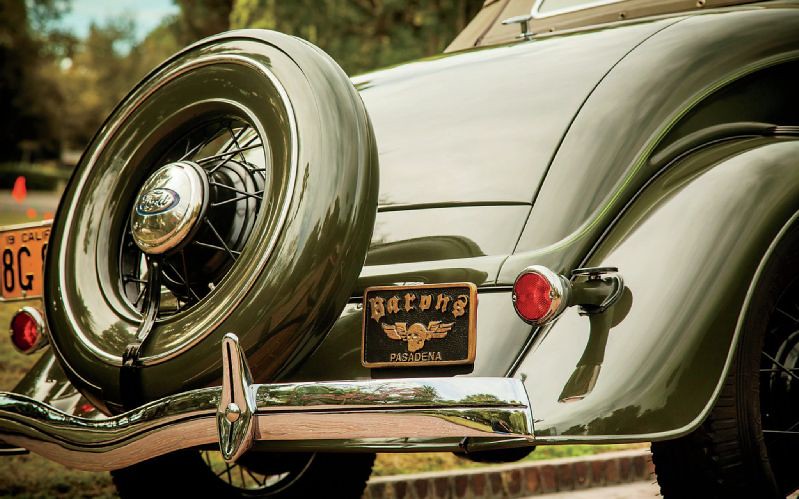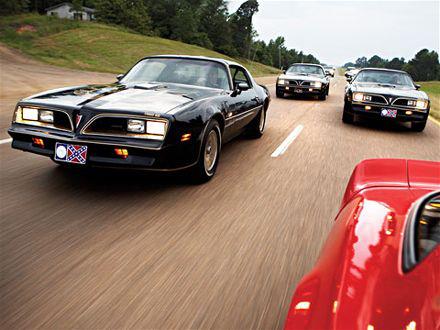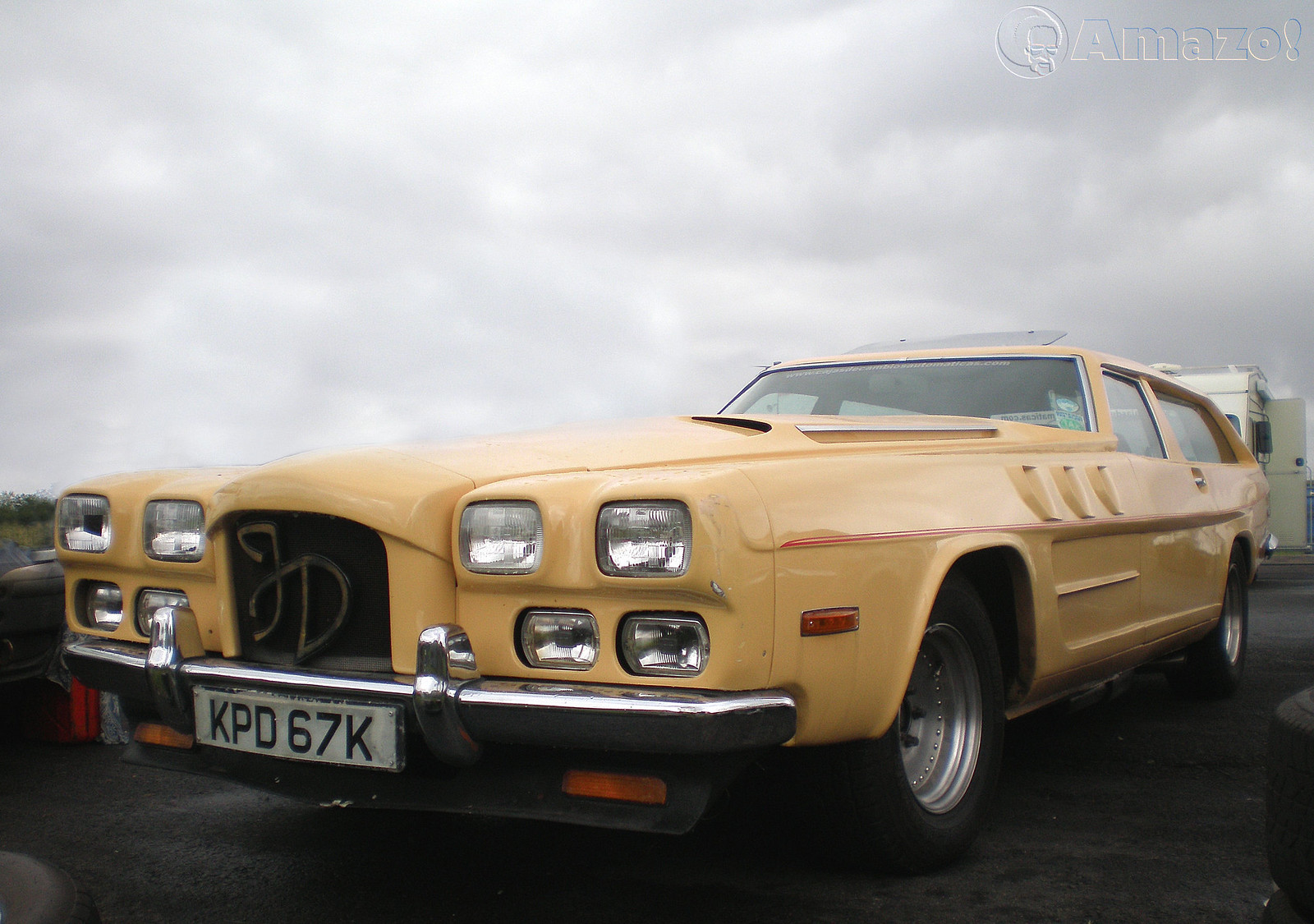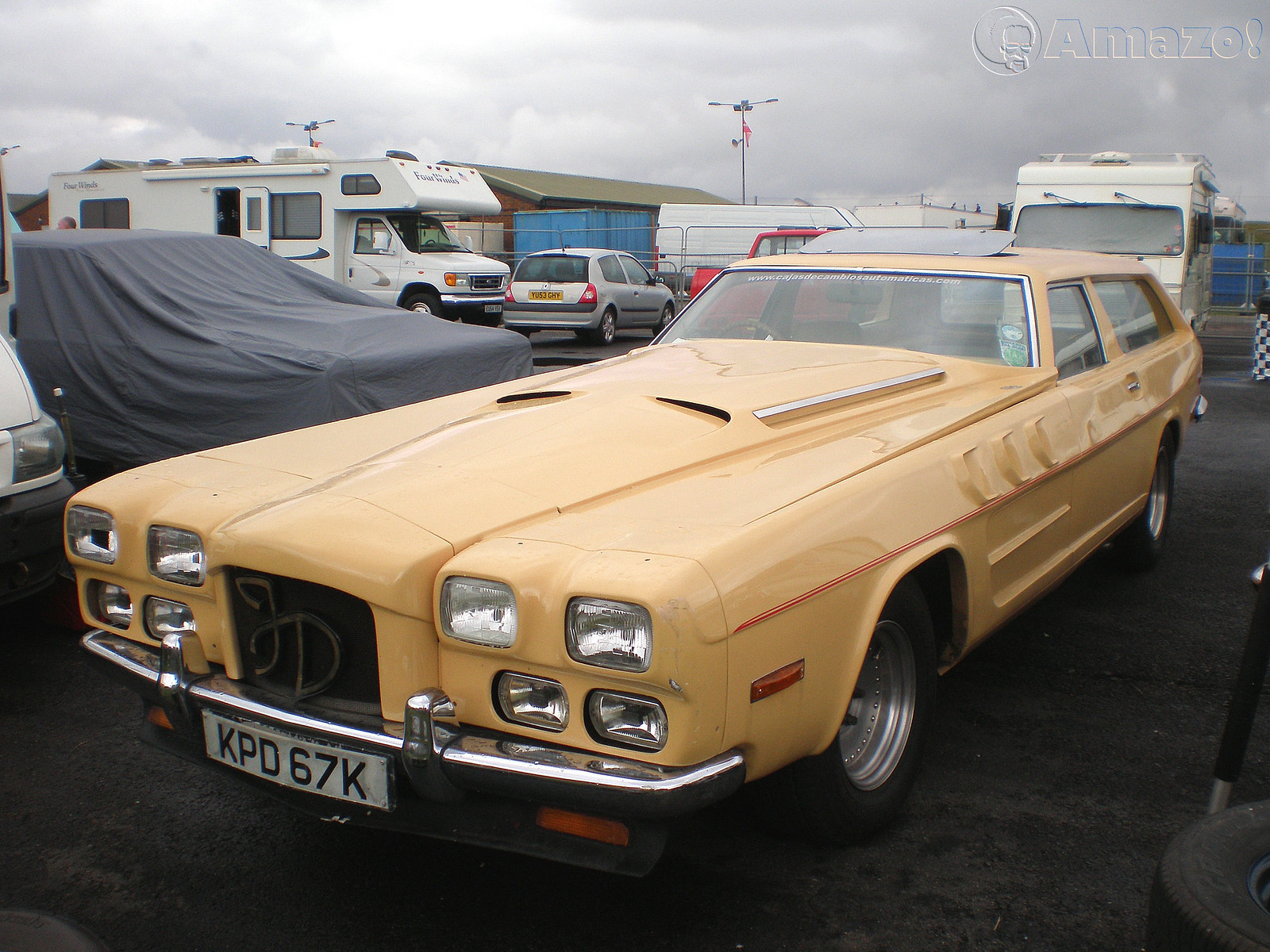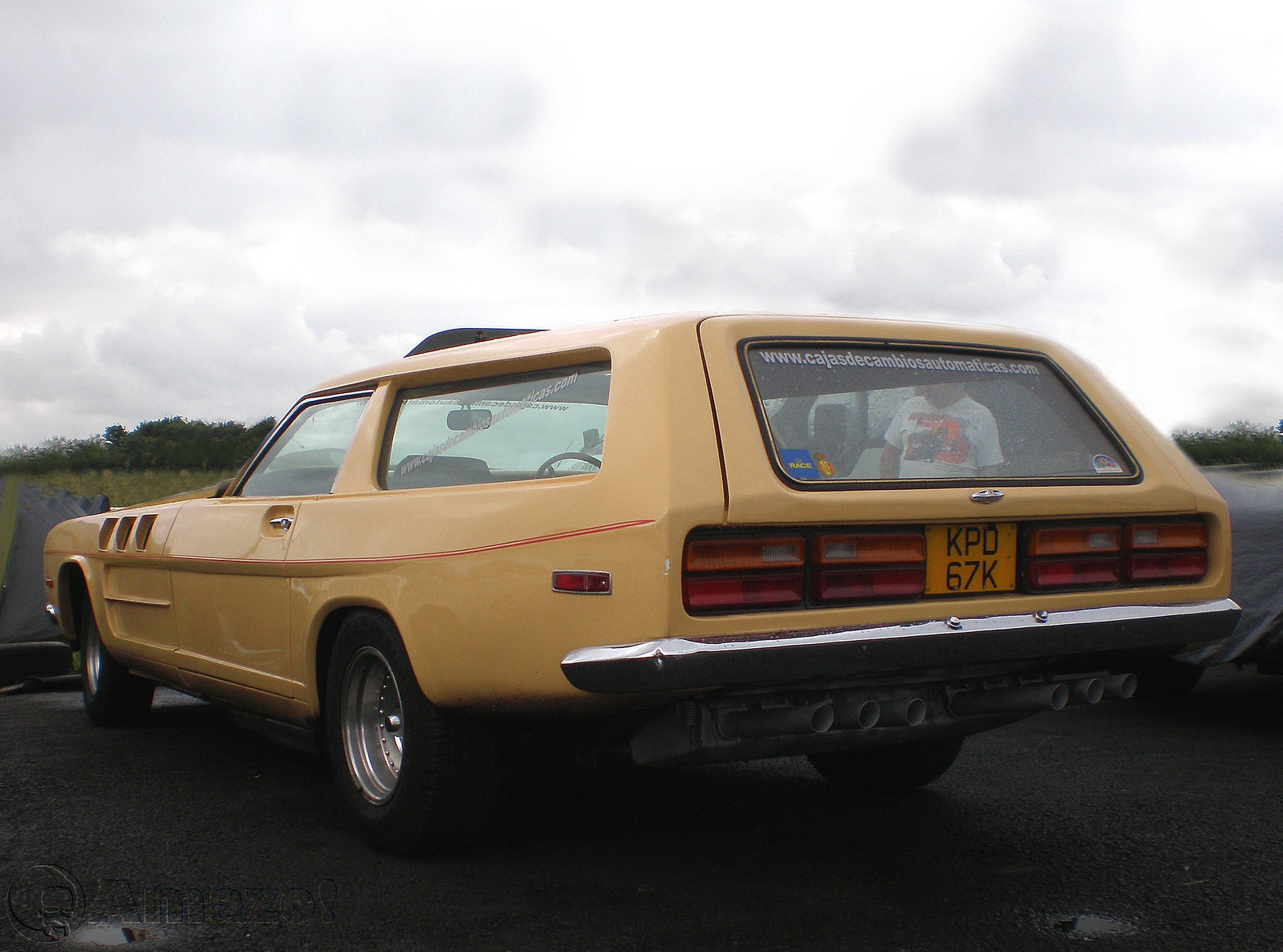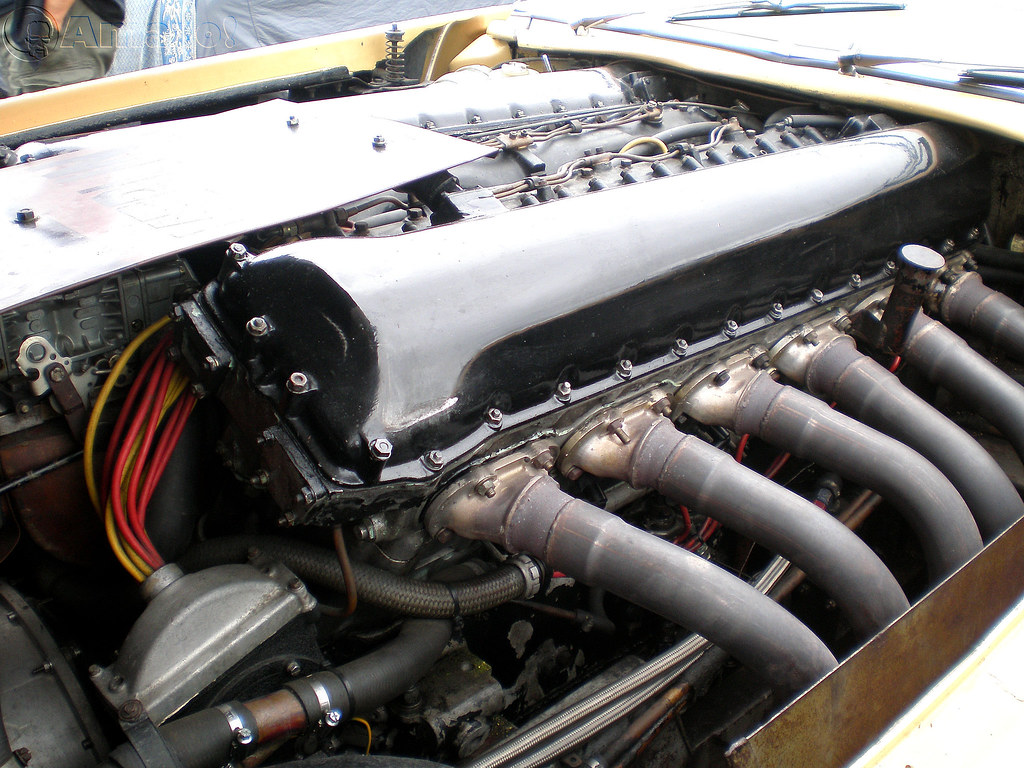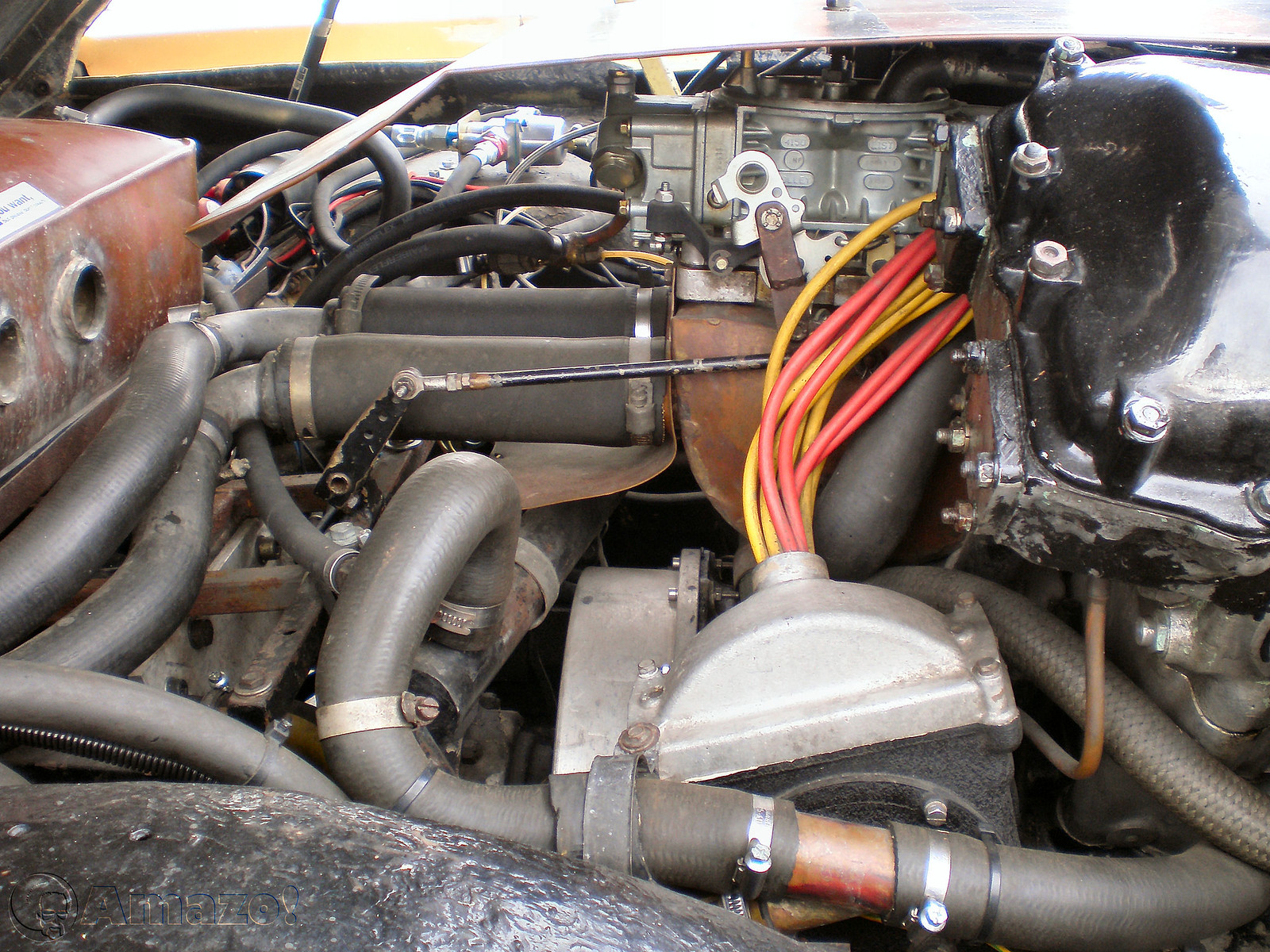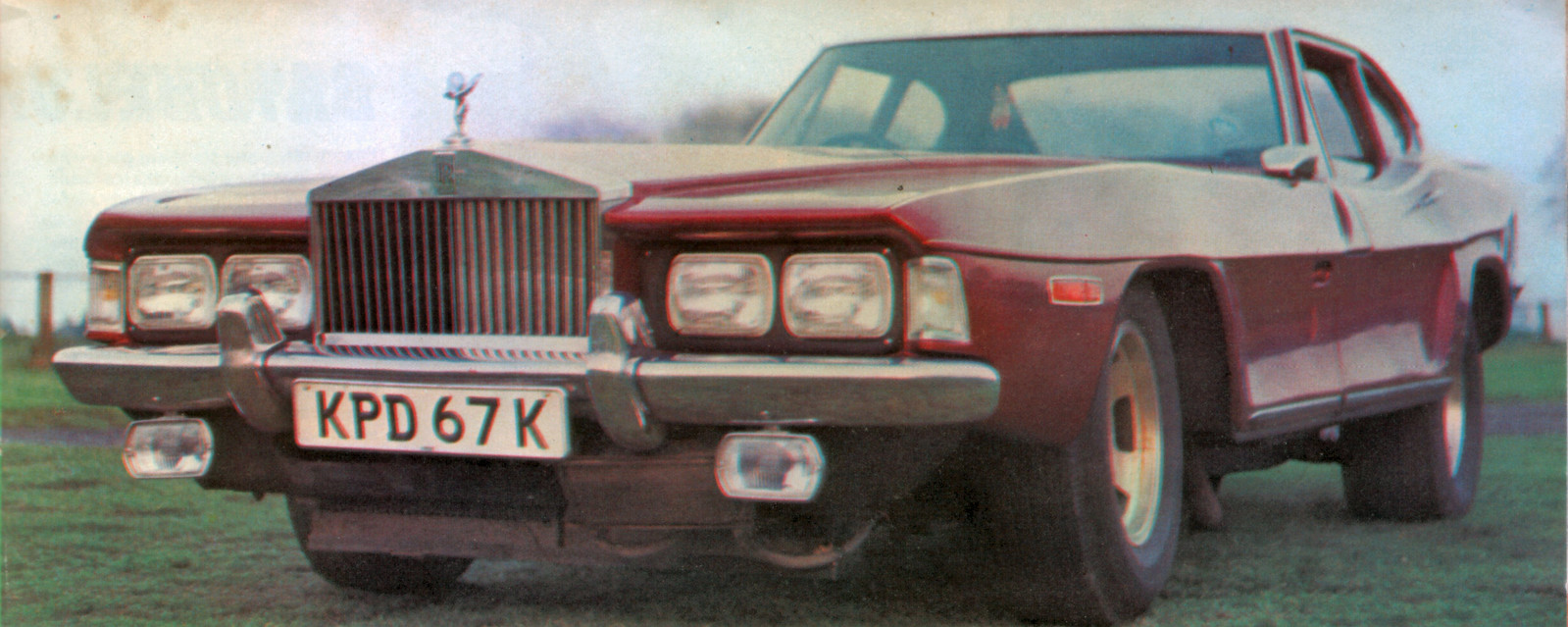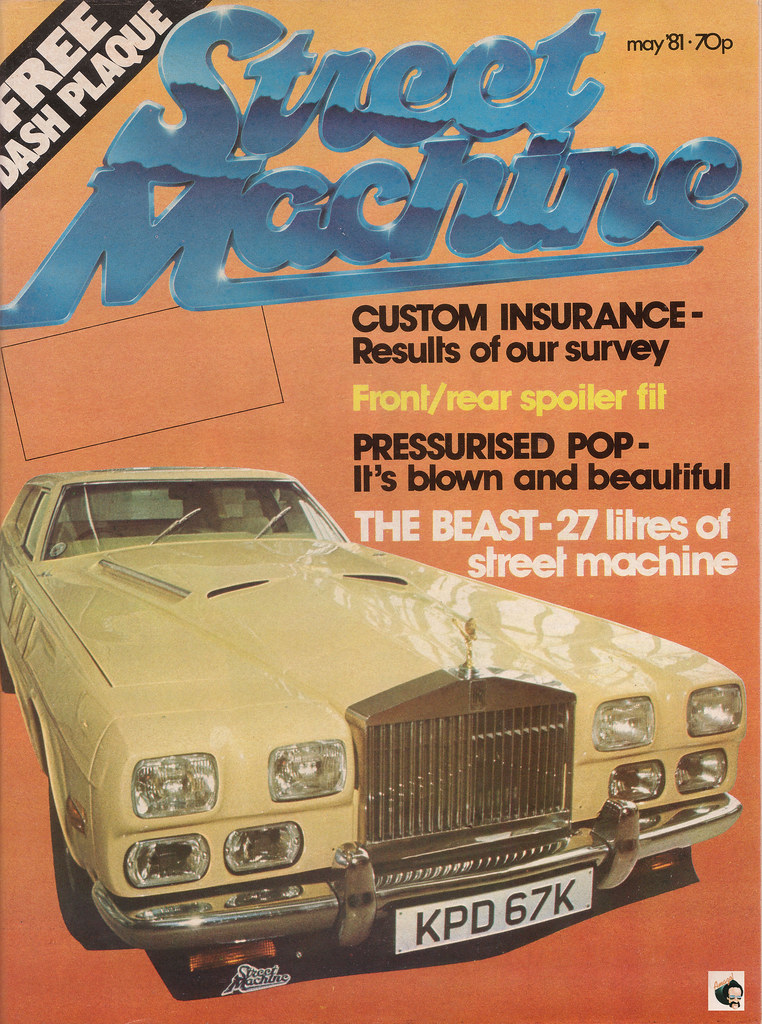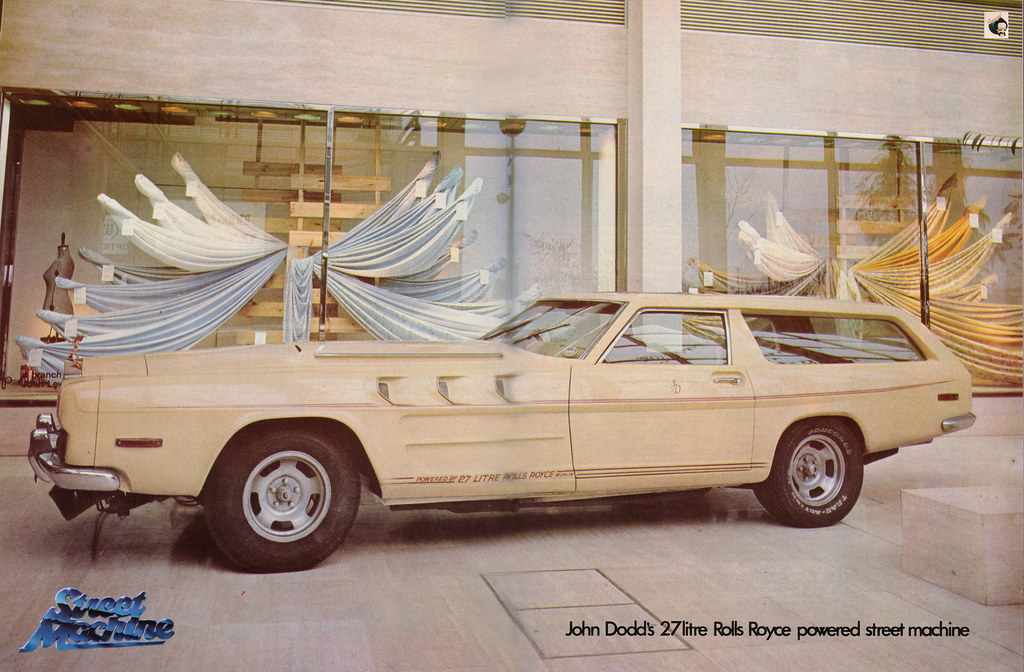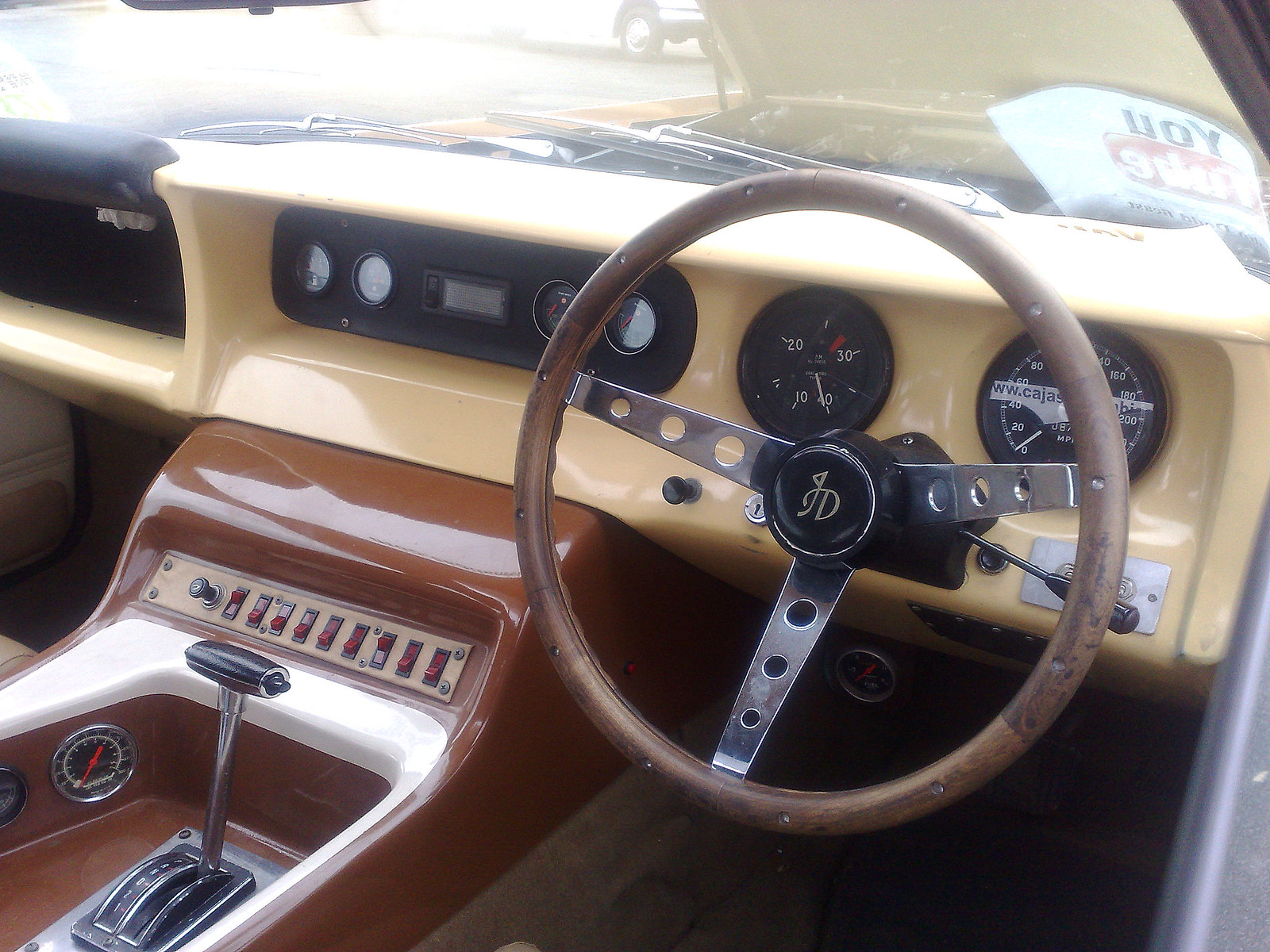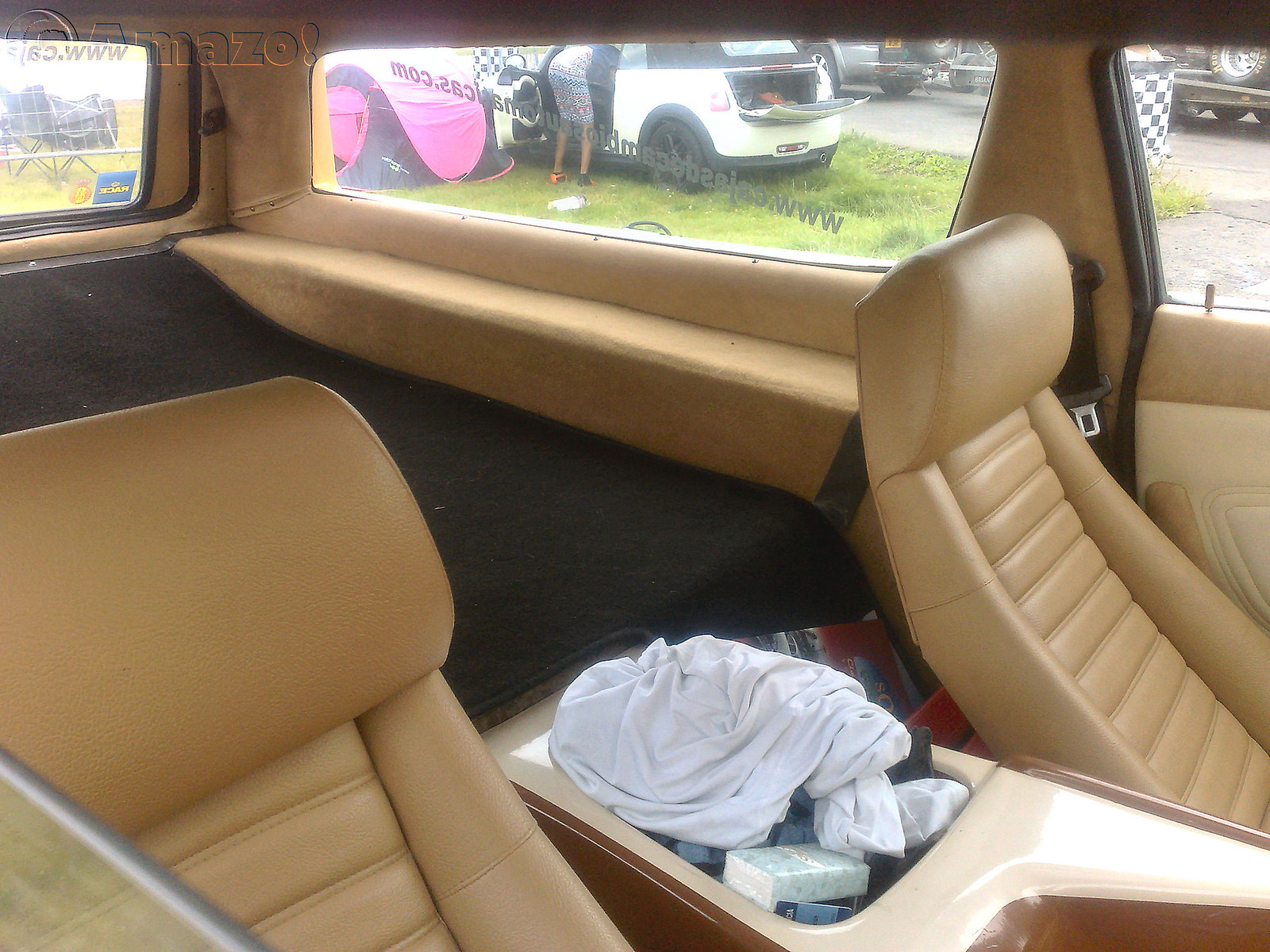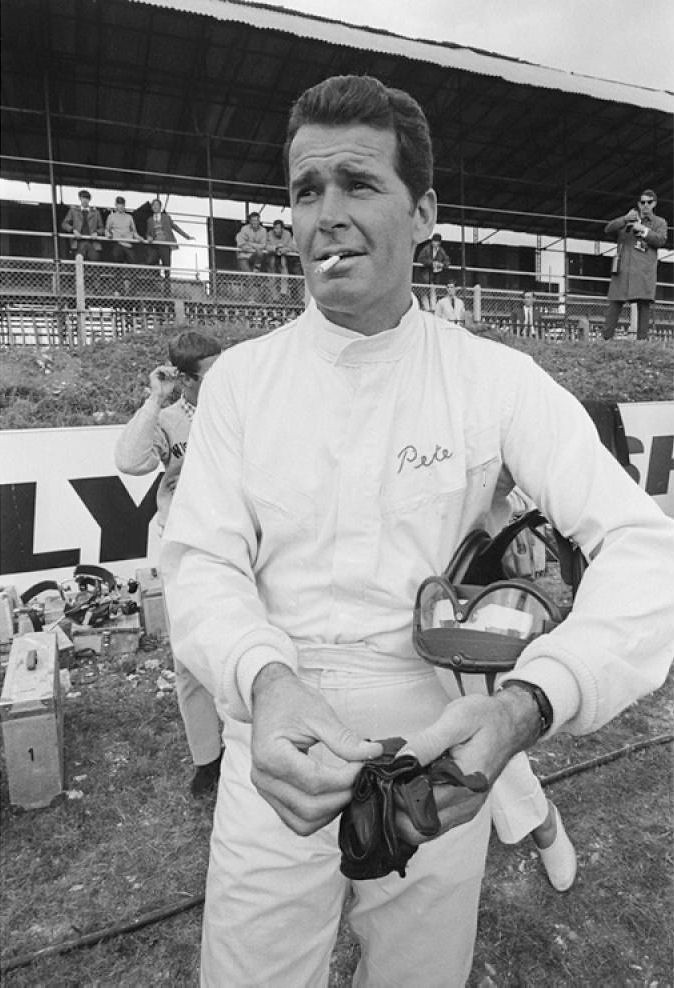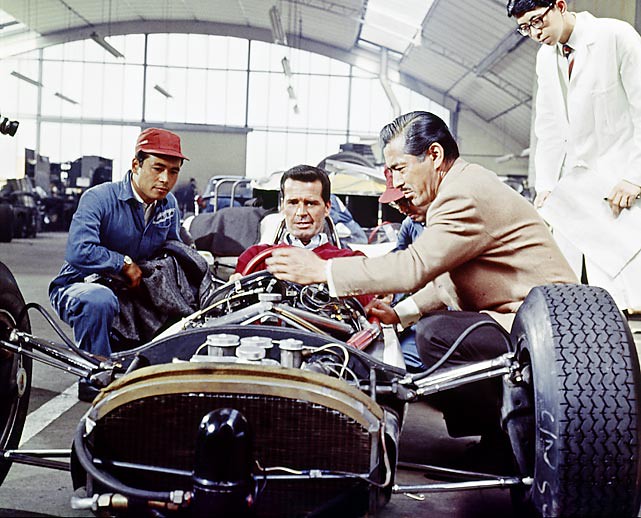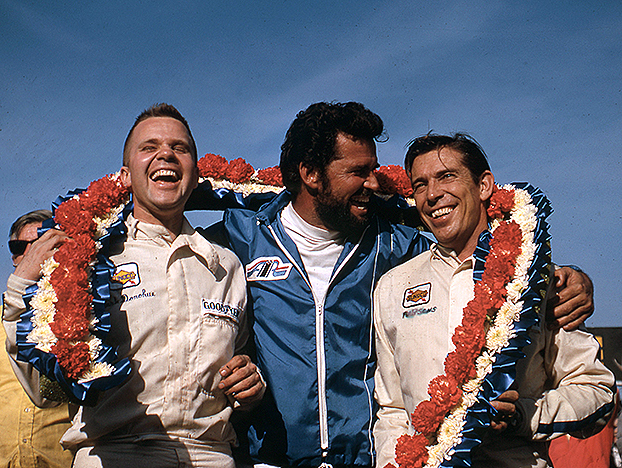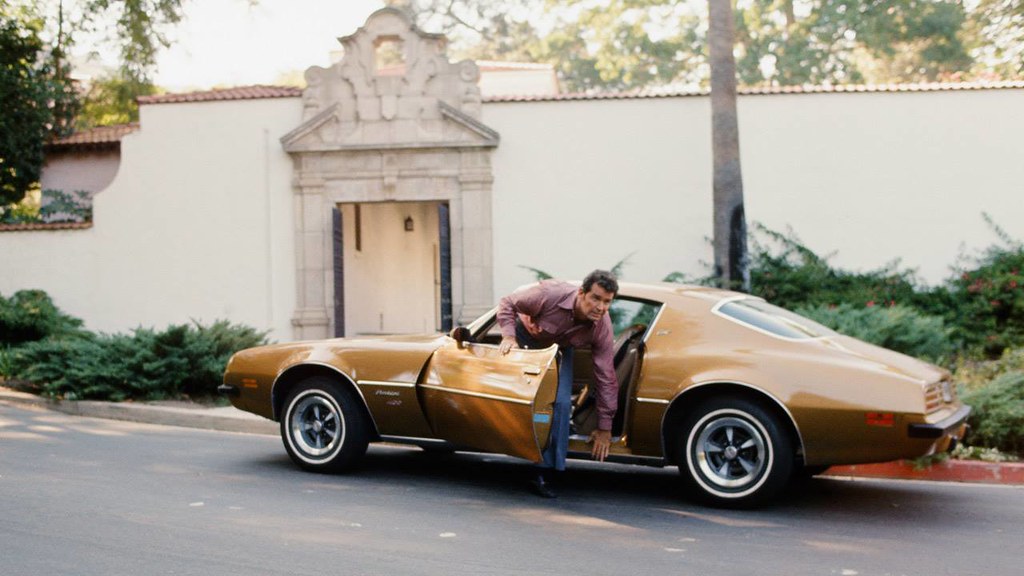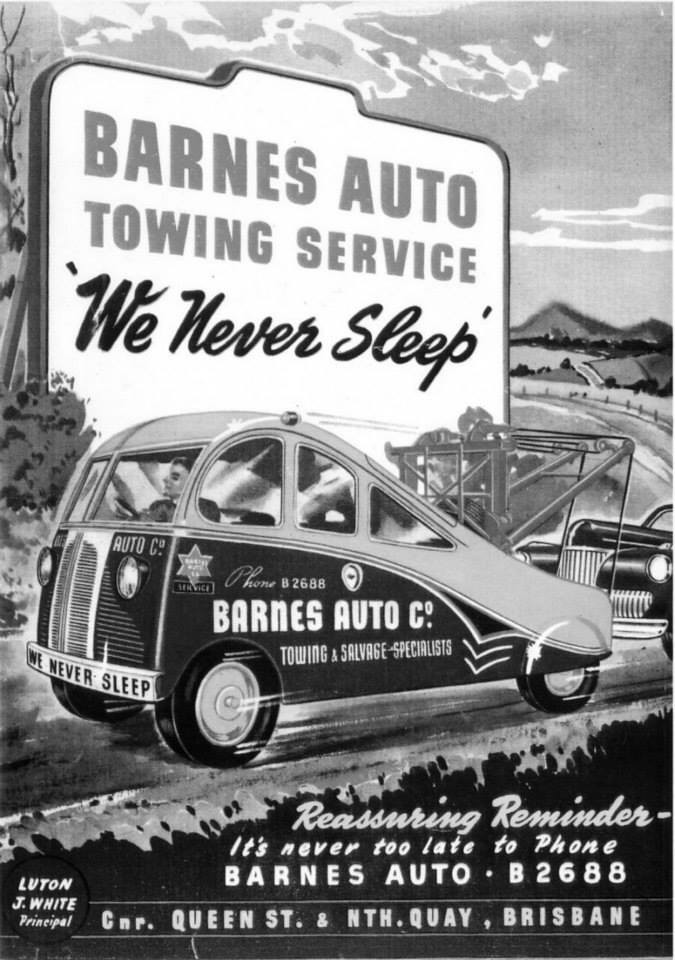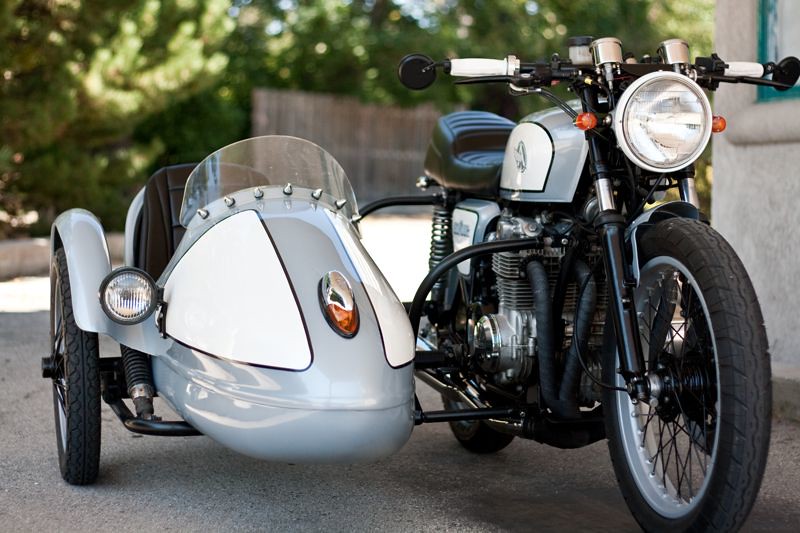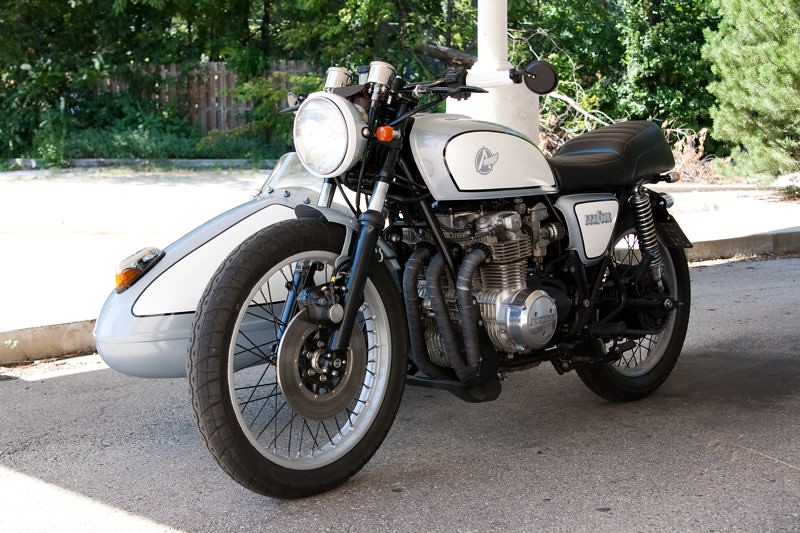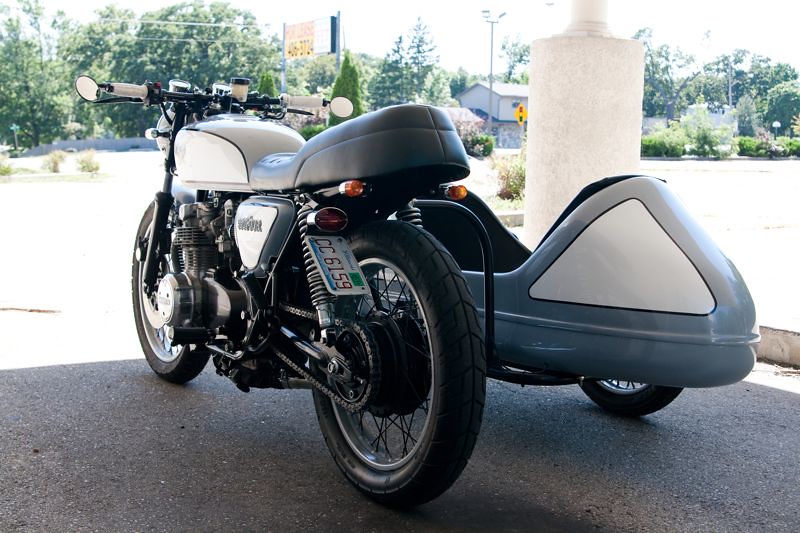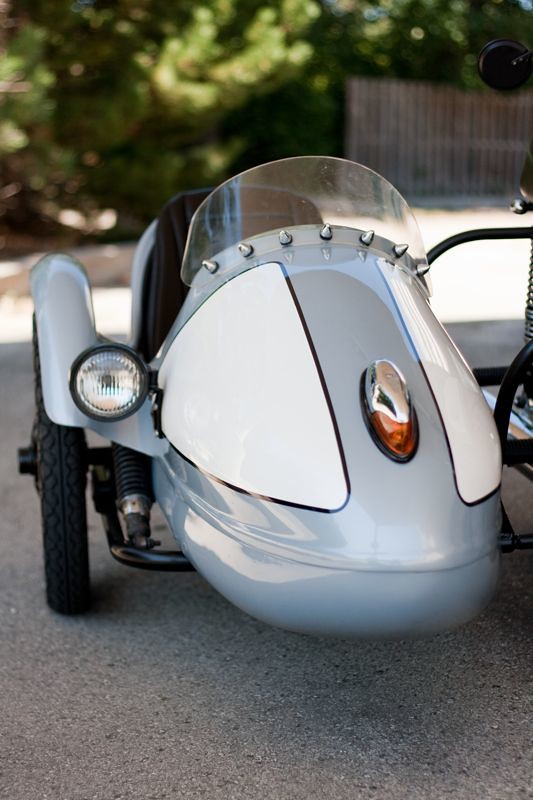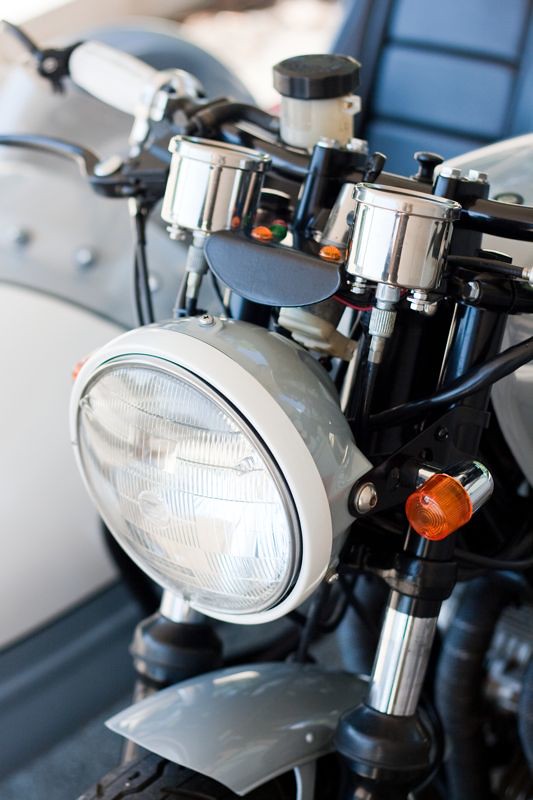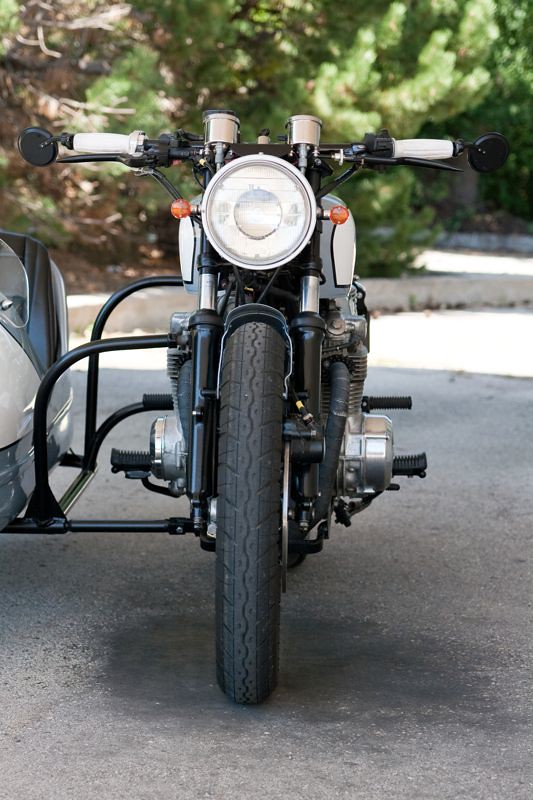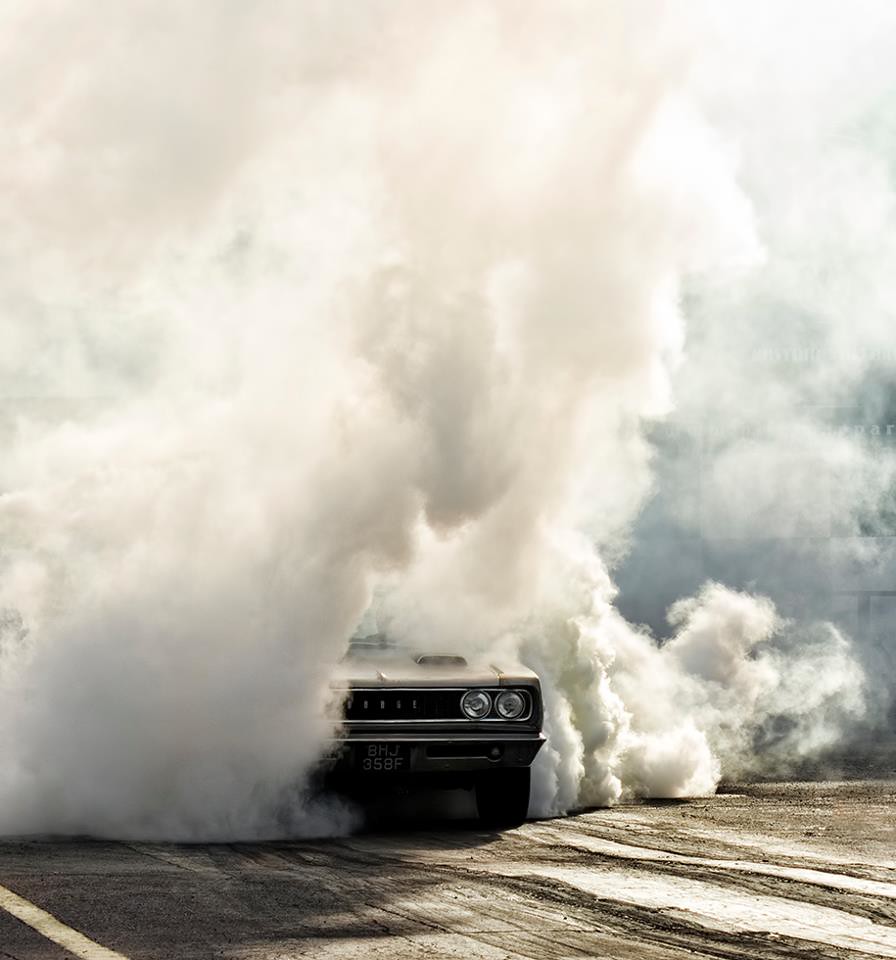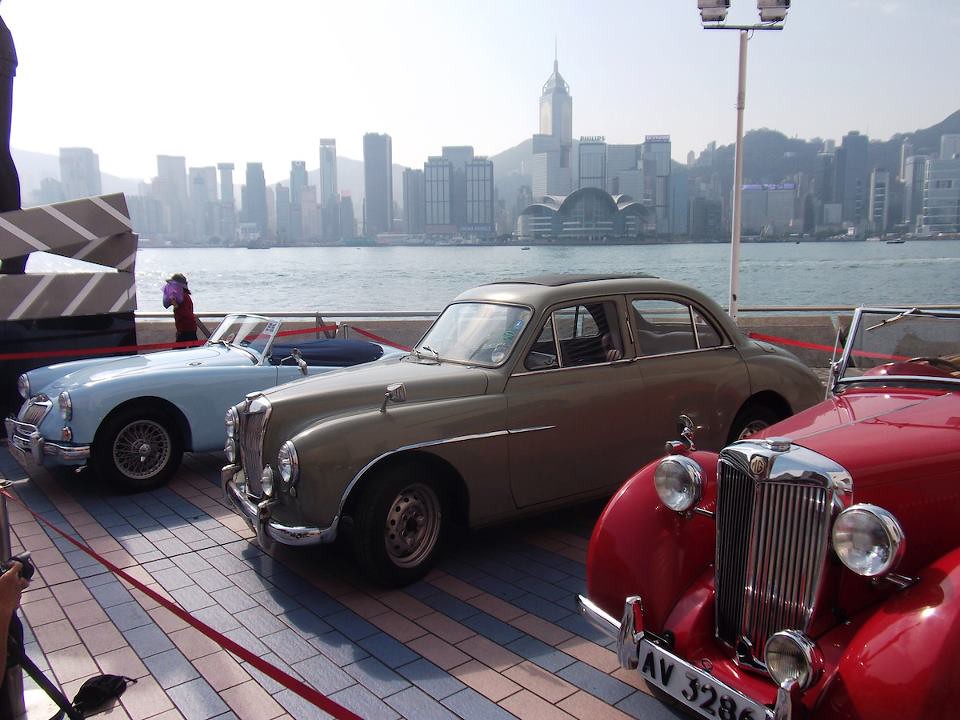30 July 2014
28 July 2014
1934 Ford DeLuxe Roadster - Almost Original
The pictures of this car could have conceivably been taken in the late 1930's, but it hails from 2014; such are the authenticity of the backdrop and the modifications to this Model 40.
A 59A flathead and '39 gearbox, hydraulic brakes from a '40 Ford, a chopped top and lowering with lower-profile tyres basically round out the mods on this 1934 Ford DeLuxe Roadster. And thats the thing; all of these modifications were being carried out on Model 40s in the late '30s, when they were just becoming affordable to the car guys at the very genesis of the hot rodding scene in the USA. This particular car was restored in the 1970's, so has the advantage of being a little fresher than an original, and to me is the acceptable face of patina: earned not forced and not blatantly obvious. I'd give this car a place in my garage in a heartbeat.
Read more here.
- Amazosan
21 July 2014
Beast Lore: The Story Of John Dodd's Merlin Machine
Now, using an engine designed for aviation to power a road car was not a new idea even in 1973, when this car was first constructed; cars such as the 1905 Darraq V8 Special or Napier-Railton of 1933 show that the concept has always been an attractive one. But John Dodd's example was different; as it was purely a home-built, road legal special not intended to break records or enter races.
The Beast MKI started life back in the late 1960's as the brainchild of engineer Paul Jameson, who took a 27-litre Rolls-Royce Merlin V12 engine, alleged to have come from a Boulton Paul Balliol training aircraft and built a chassis from scratch to house it. In actual fact, the engine in the first Beast was the Rover-built Meteor, a similar engine to the Merlin but adapted for use in armoured vehicles such as the Centurion and Conqueror tanks.
After the engine, the rest of the running gear seemed more prosaic; the rear suspension was from a Jaguar 420, while the front end was from an Wolseley 6/99 of all things, with stronger springs. All was going well until it came time to source a suitable transmission for the low-revving (120RPM at idle!) Merlin, and after destroying various gearbox and clutch combinations Jameson contacted Epsom automatic transmission specialist John Dodd, who designed and built a step-up box to allow the low-revving Merlin to connect to an automatic gearbox.
After eight tries, he succeeded; a modified Rolls four-speed Hydra-Matic transmission was used with some modifications, such as increasing the fluid line pressures and fitting two massive oil coolers. Later, the car was fitted with a GM Turbo-Hydramatic 400 three-speed automatic with similar modifications.
Jameson did not get around to building a body; indeed he had lost interest in the project, so sold the car to Dodd for £500 in 1969.
Incidentally, Jameson designed a second Merlin-powered car in the mid-70's; this one had six wheels - two in front and four driven at the rear - and a mid-engined layout, with a Merlin equipped with it's original two-stage supercharger and nearly 1500bhp. That vehicle was featured by Motor magazine), and currently resides in a museum in Sweden.
 |
| Clever jackshaft arrangement runs alternator, just visible behind steering column |
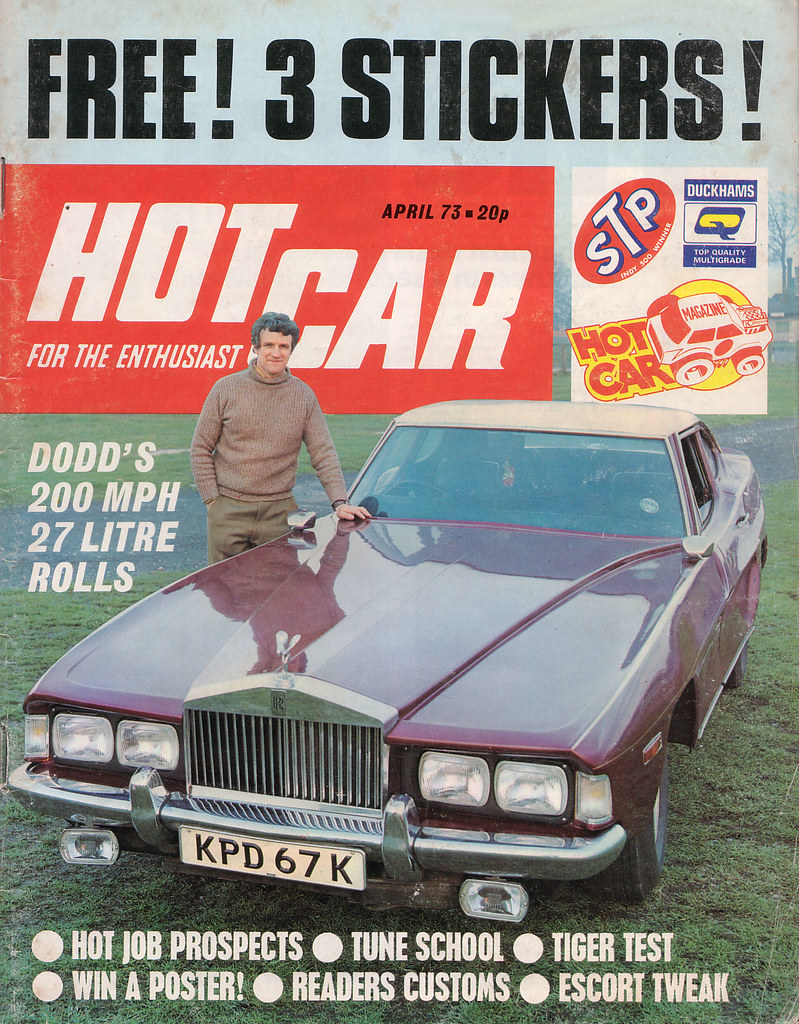 |
| The original incarnation of The Beast, before the fire |
It garnered a lot of publicity, being surrounded by the public whenever it was parked and was featured on TV and in newspapers at the time, including Hot Car magazine in 1973. It wasn't just for looks though; that Meteor still had 700bhp and 700lb/ft of torque even without a blower, and earned an RAC-certified speed record at Elvington airfield for the flying half-mile, along with inclusion in The Guinness Book of World Records as 'The most powerful road car in the world' at the time.
The car was gaining notoriety for its speed on public roads too; a newspaper headline proclaiming "Roll-Royce's 200mph supercar" probably helped bring the car to the attention of Rolls-Royce, who predictably weren't amused when an existing customer contacted them about ordering one after being outrun on the Autobahn by The Beast at over 150mph while driving his Porsche. RR threatened court action for breach of copyright for the use of the Greek temple grill on The Beast, but the action would never reach court; Dodd was driving the car back from a show in Sweden when the car bottomed out at high speed, splitting one of the transmission oil tanks and setting the car on fire. He tried frantically to extinguish the fire, but in vain; The Beast was reduced to a burnt wreck.
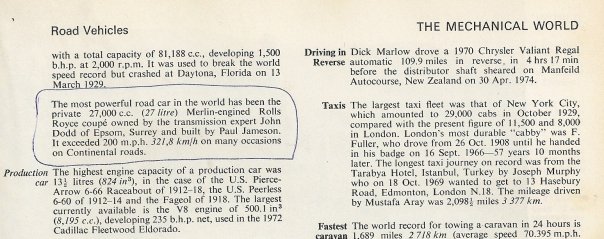 |
| Exceeding 200mph on continental roads? In the 70's? Yikes! |
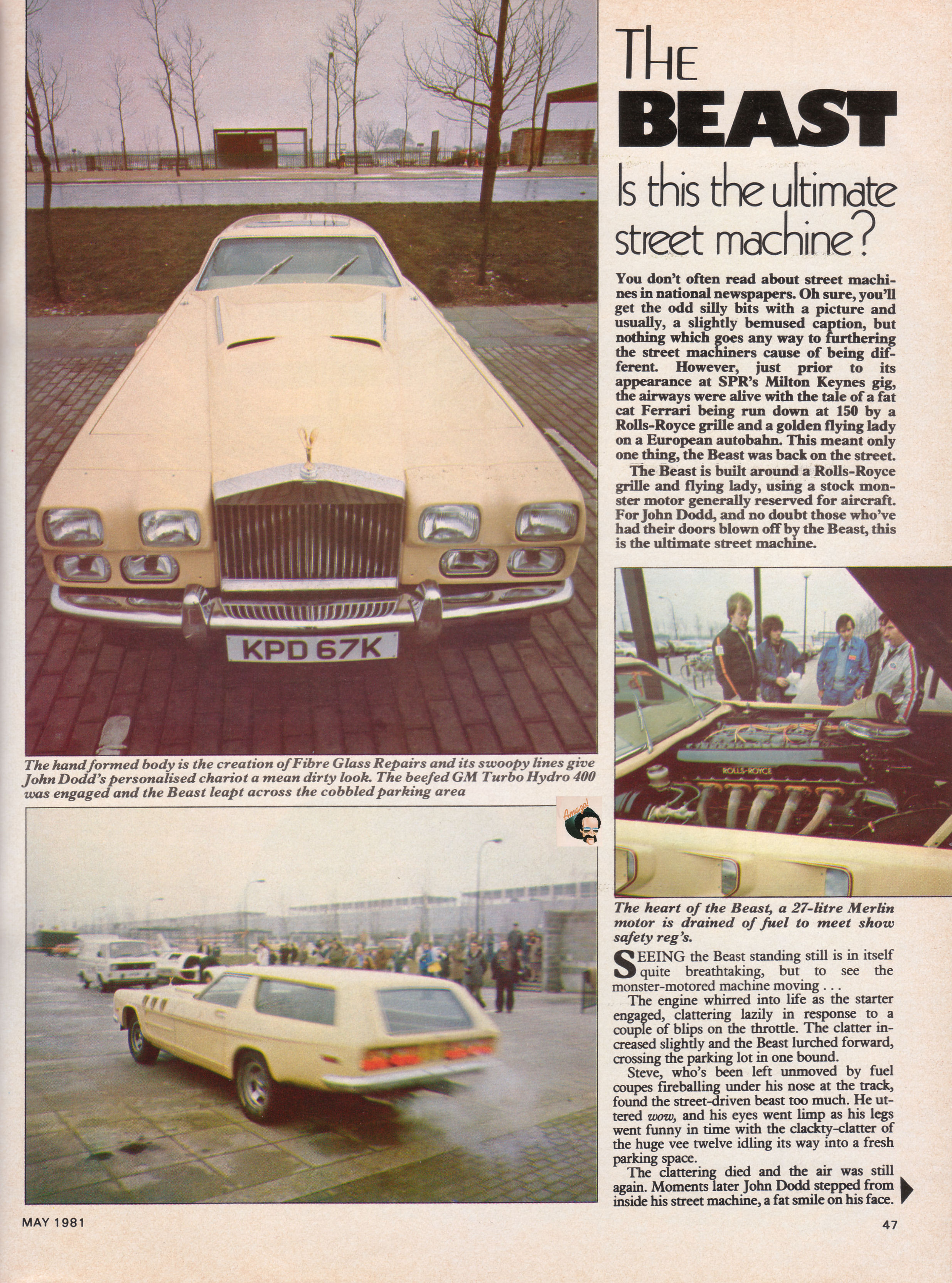 | 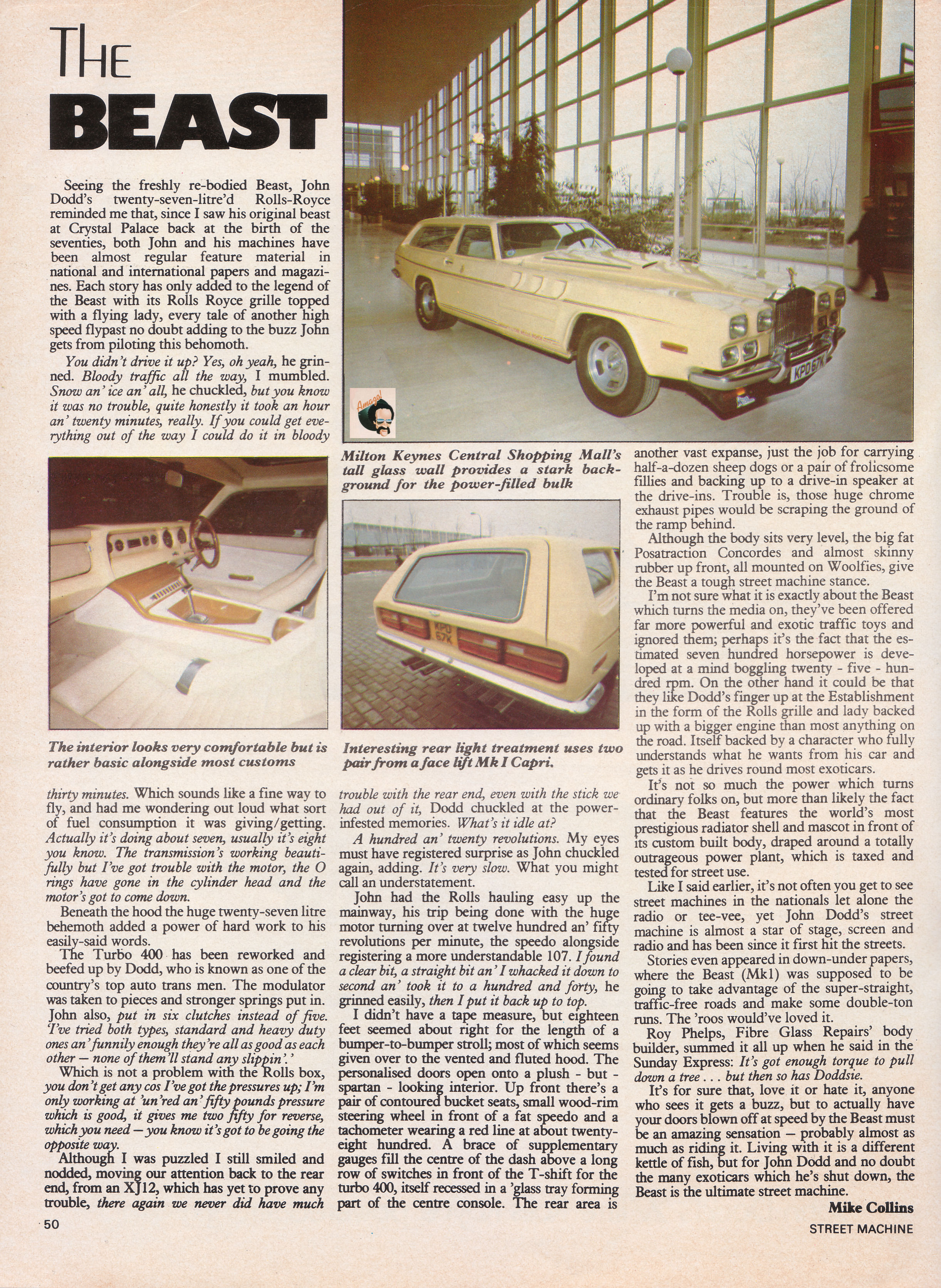 |
And having talked with the Dodds on the day it's apparent this car is not only still cherished, but will probably live on for years yet, terrorizing small children, confusing hybrid-driving motorists and getting thumbs-up from every petrolhead that sees it. If you want a chance to see it for yourself, they're taking it to the Goodwood revival in September; I'm hoping my idea I pitched to them of contacting BMW GB in the hope that it can wear the Roller grill at the event stuck...
- Amazosan
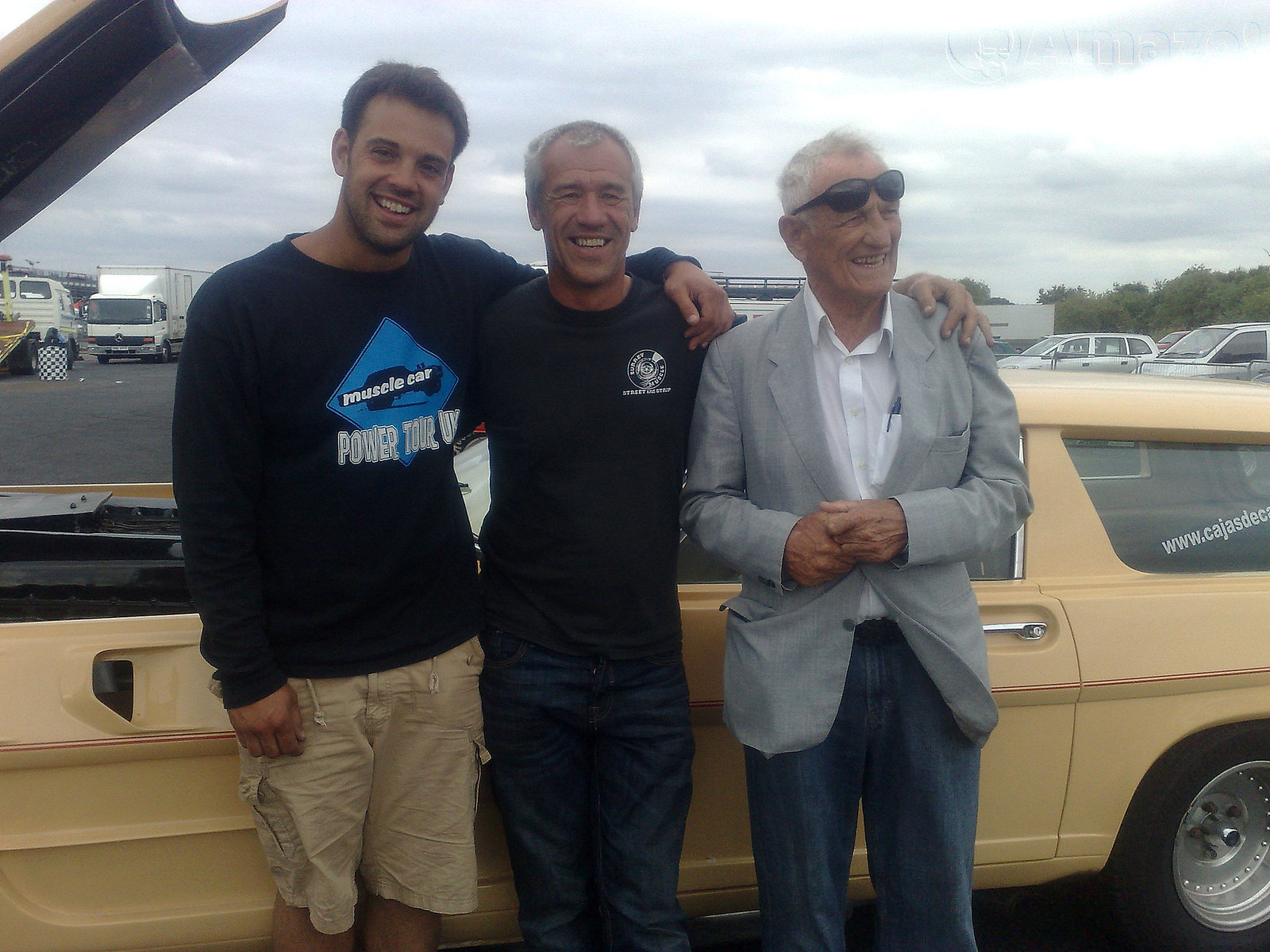 |
| Three generations of Dodd: Jason, Paul & John will probably mean The Beast will live on for years |
RIP James Garner
Many an hour were spent watching James Garner in Maverick and The Rockford Files (his gold Pontiac Firebird was a welcome bonus), but I remember him best for Flight Lieutenant Bob Hendley DFC RAF aka 'The Scrounger' in The Great Escape and as Pete Aron in Grand Prix.
That film inspired him to take a further interest in motorsport, becoming part-owner of the American International Racers team from 1967 to 1969, which inspired the 1970 documentary The Racing Scene.
- Amazosan
18 July 2014
16 July 2014
Honda CB550 with Eagle Sidecar by Analog Motorcycles
Sidecars really seems to have fallen out of favour in the last decade or so, in my opinion. While vintage motorbikes are a perennial and racing sidecar outfits are always revered, the humble sidecar attachment seems to have almost been forgotten or worse, is seen as uncool.
Well, Analog Motorcycles have built a bike that proves that the geeky sidekick to the centre of attention can make for a great double act. The sidecar in question is a Spirit Of America Eagle sidecar made in California from about 1973 to 1975 these are make from fibreglass sitting atop a steel frame. These are quite light, so the owner has welded some ballast to the frame to compensate for the lack of a passenger on most journeys.
Lets not forget the bike part of this dynamic duo; its basically a fully restored Honda CB550 with some nice touches, like a 4-1 exhaust, aftermarket indicators, handlebar-end mirrors and a custom dash bracket. Its the perfect era match for the sidecar and the combination looks like one you could ride for miles.
-Amazosan
14 July 2014
Subscribe to:
Posts (Atom)






